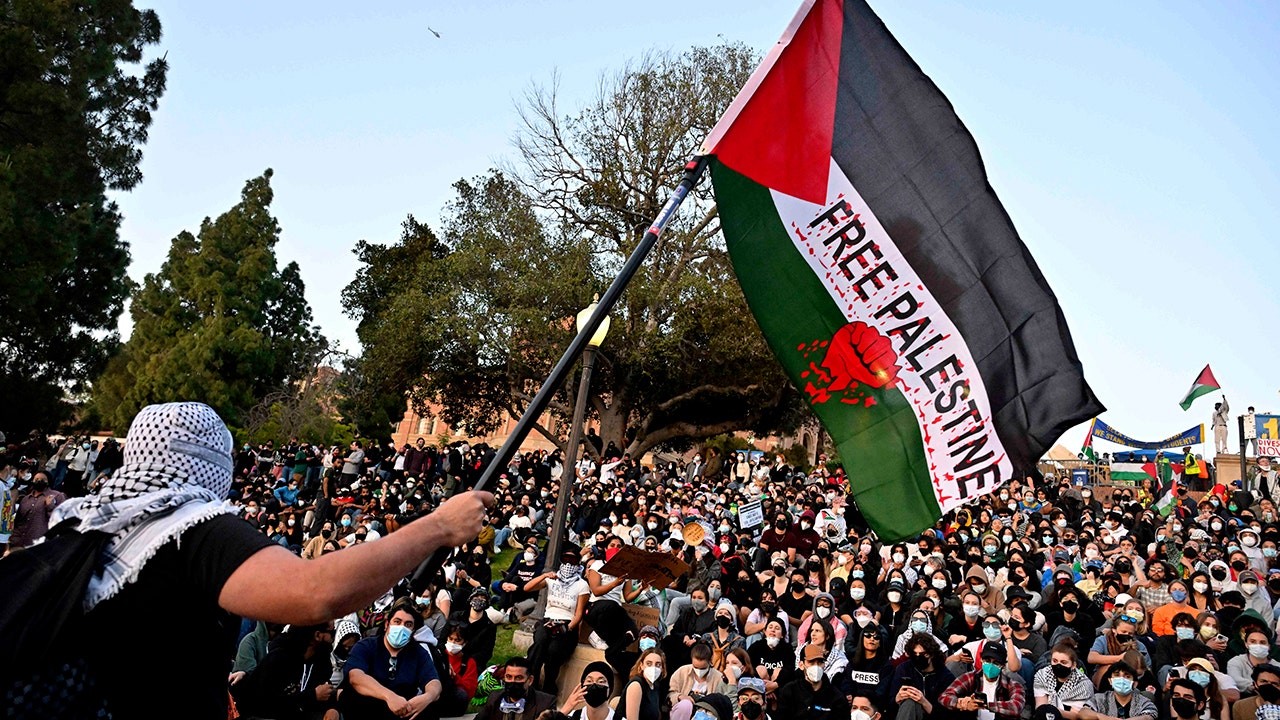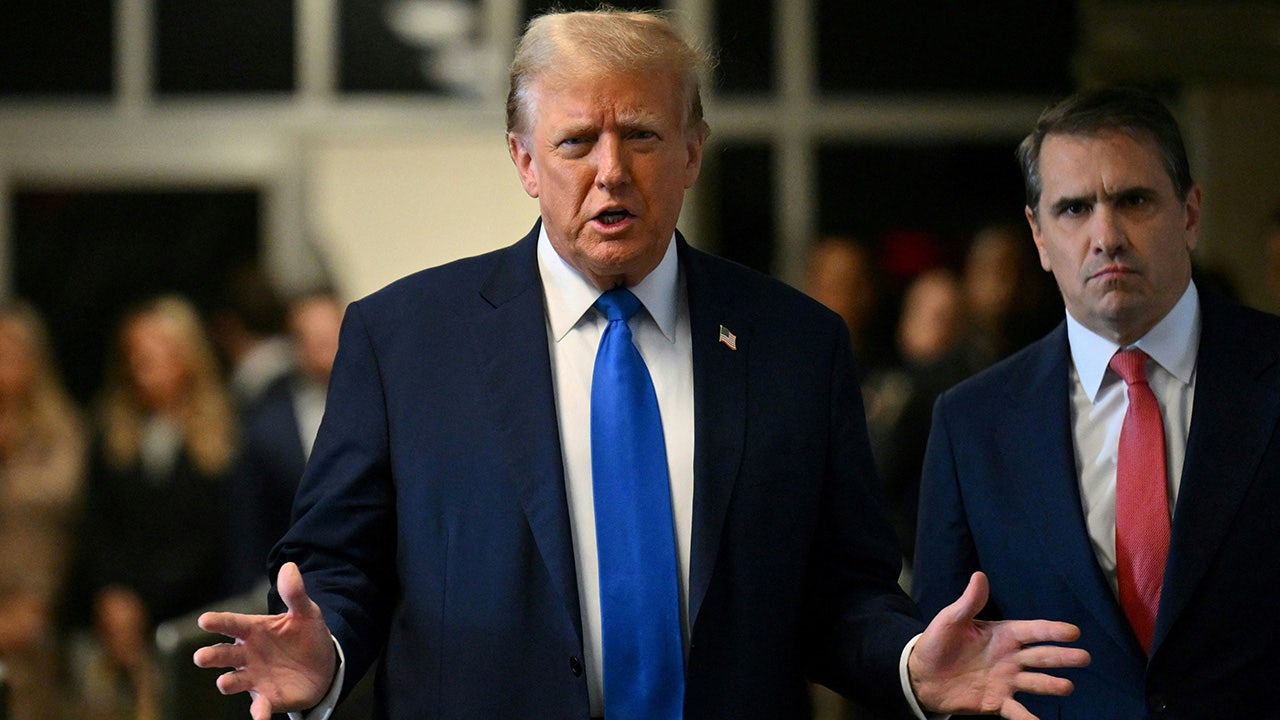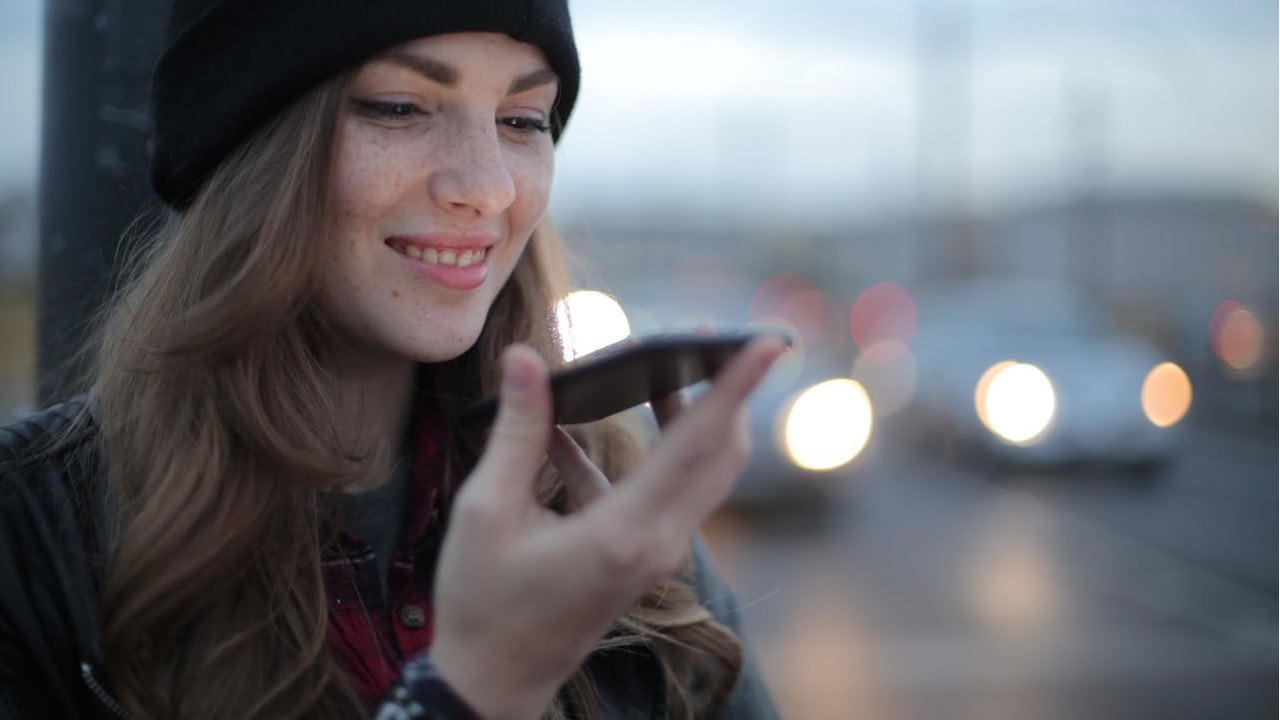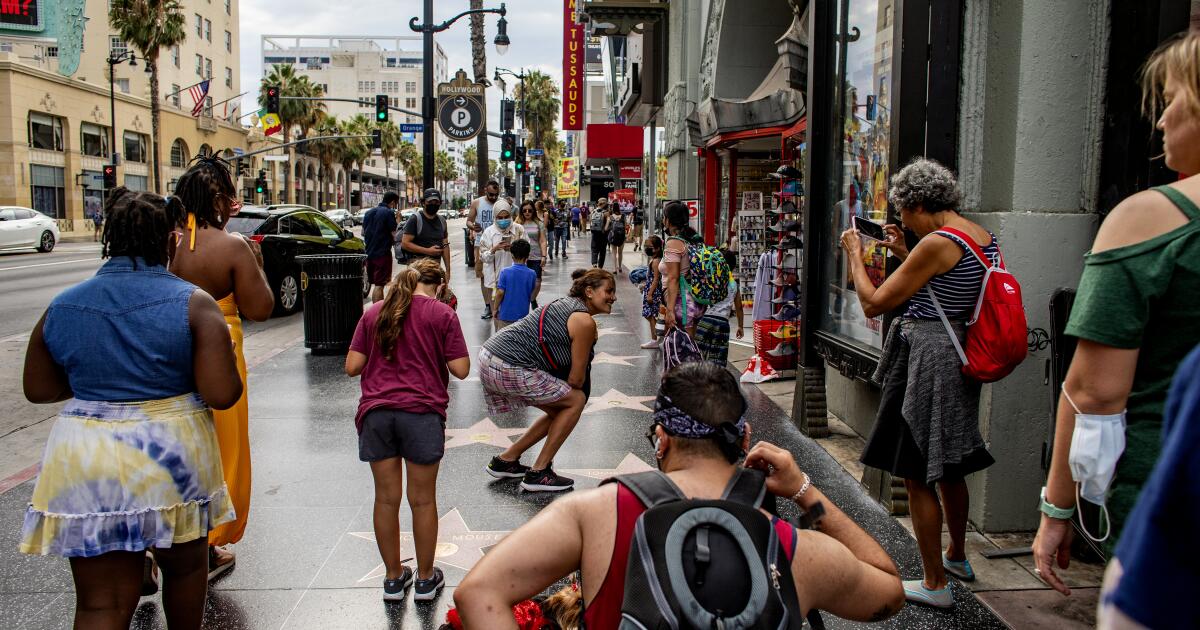Sports
History of the Triple Crown series: Fastest Preakness Stakes race times from American thoroughbred horses
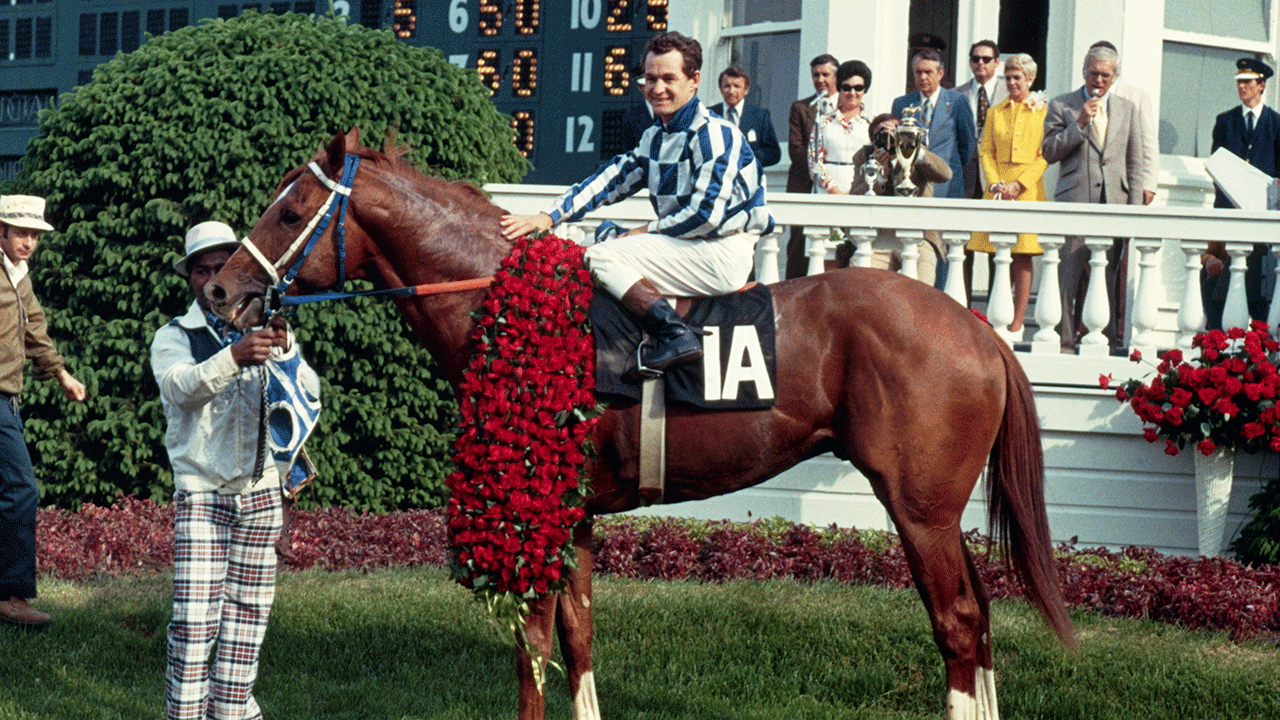
Some of the greatest horses that have competed in the Triple Crown series have set record wins at the Preakness Stakes in Maryland.
Since its founding in 1873, the Preakness Stakes at Pimlico Race Course in Baltimore has undergone several changes but remains mostly the same since 1925 when Pimlico was built with a distance of 1 3/16 of a mile.
Read below to discover the fastest racehorses in the history of the Preakness Stakes.
RICH STRIKE WILL SIT OUT PREAKNESS AFTER HISTORIC WIN AT KENTUCKY DERBY
- Secretariat
- Swiss Skydiver
- Tank’s Prospect
- Louis Quatorze
- Curlin
1. Secretariat
Widely considered the greatest racing horse in the history of the sport, Secretariat holds the crown with the fastest record at the Preakness Stakes. Known for his chestnut coat and three white socks, the stallion became the first horse in more than two decades to win the Triple Crown in 1973 and did so by setting record finishes at the biggest events in U.S. horse racing.
Secretariat has the fastest record-time victory at the Preakness Stakes and the Triple Crown winner is considered the best racing horse of all time. (Jerry Cooke / Corbis via Getty Images / File)
In May 1973, Secretariat started the Preakness race off in last but showed the capabilities of his speed with a burst of momentum that quickly placed him in the lead. Secretariat maintained the top spot all the way to the finish line while setting a record-time finish at the Pimlico Race Course at 1:53 on the dot. The performance left spectators shocked and helped skyrocket the fame and reputation of Secretariat.
However, for decades, the official record set by Secretariat remained miscalculated at 1:54 2/5. In 2012, the record was officially corrected after a forensic review of the tapes discovered that the race clocker had failed to properly keep track of the time. During the race, the stallion sprinted across the remaining 3/16 of a mile in exactly 18 4/5, about 2 ½ lengths ahead of his closest rival, Sham.
2. Swiss Skydiver
In recent years, one of the racehorses to come close to the record set by Triple Crown winner Secretariat at the Preakness Stakes was Swiss Skydiver in October 2020. The race was held five months later than its original start date due to the COVID-19 pandemic, thus allowing Skydiver to mature for several more months before having to compete.
The female horse took command of the field by defeating Kentucky Derby champion Authentic by the second-best record time in the history of the race at 1:53 28 seconds. Initially, Skydiver maintained her speed during the start of the race between the 24- and 50-second mark, however, she unleashed speed halfway through, sizing the lead at approximately one minute. The mare solidified her position in racehorse history with the performance, nearly overtaking Secretariat’s record.
3. Tank’s Prospect
The bay-colored stallion Tank’s Prospect set the third-best time at the Preakness Stakes in 1982 when he beat Chief’s Crown by a head at a time of 1:53 2/5. Initially, Tank did perform well at the start of the race, falling to the back of the field for the majority of the time. However, in the last minute, the stallion broke out in a sprint and finished as a winner and set a Preakness record.
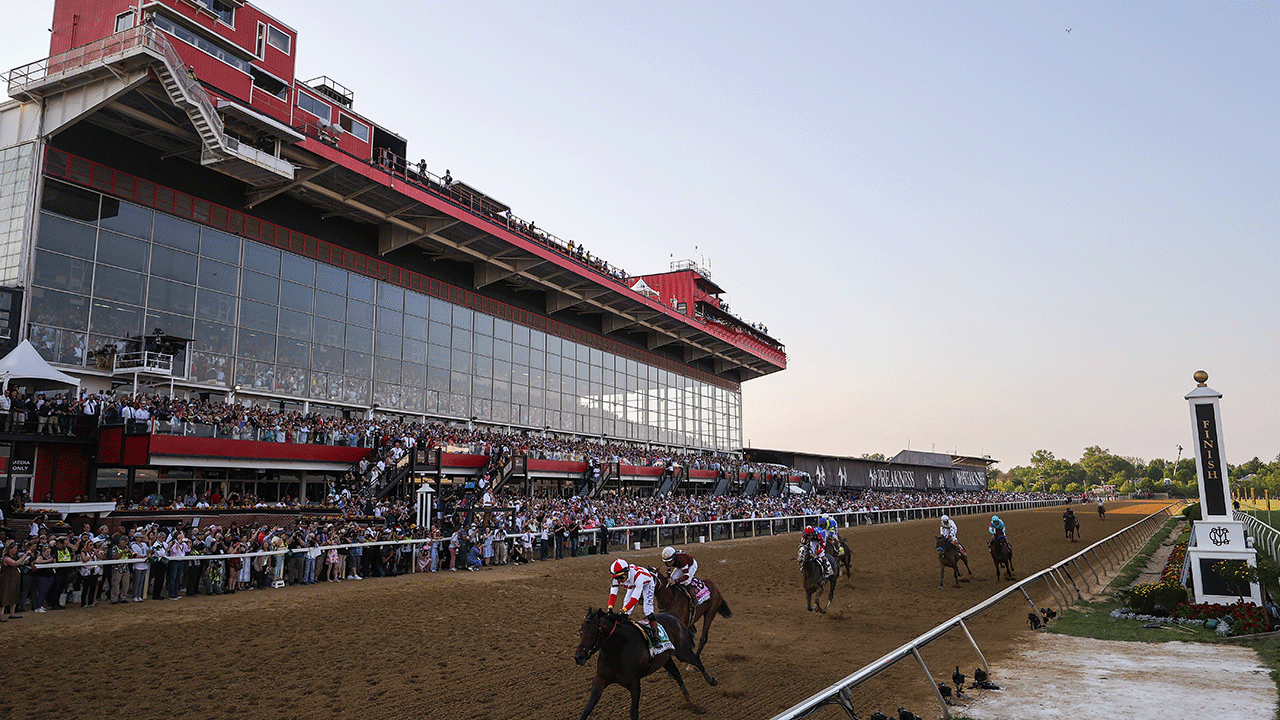
In 1925, the Pimlico racetrack solidified the length of its field at 1 3/16 of a mile in length. (Patrick Smith / Getty Images / File)
The young horse did not perform well in the first leg of the Triple Crown series, running in seventh at the Kentucky Derby; however, his victory at the Preakness Stakes shifted the tone and gave him momentum going into the Belmont. However, Tank suffered an injury at the start of the race and was unable to finish, thus ending his racing career and prospects.
4. Louis Quatorze
Coming in at No. 4 is Louis Quatorze, known for his fast-paced victory in the 1996 Preakness Stakes, where he finished with a time of 1:53.43 seconds. Previously, the young stallion had a disastrous finish weeks prior during the Kentucky Derby, coming in 16th place out of a race of 19 horses. However, his victory at the Preakness helped solidify his racing legacy.
Louis Quatorze broke out a gate 6 with impressive speed and was able to take and maintain a lead early during the race. Moreover, he repelled a challenge from Skip Away at about the 1:09 mark and won by 3 ¼ lengths. At the time, Louis’ record was thought to be comparable to the one set by Secretariat years prior before it was revised in 2012.
5. Curlin
Finishing at No. 5 as one of the top record-holders at the Pimlico racetrack is Curlin. In May 2007, the stallion’s story is another example of a racehorse taking the victory at the Preakness after being behind at the start of the event. From the 20-second to the one-minute mark of the race, Curlin dropped 13 lengths behind first place but was able to rally his speed at defeated Kentucky Derby winner Street Sense.
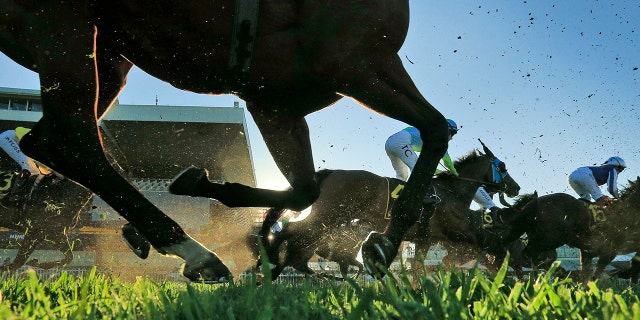
Some of the biggest names in horse racing history have made their legacies while competing at the Preakness Stakes. (Getty Images / File)
The time set by Curlin was 1:53.46 seconds. The horse would go on to have a notable career and win two Horse of the Year titles before retiring in 2008 with some of the highest earnings in North America at more than $10 million.

Sports
MLS goalie, wife arrested after nightclub fight in Florida
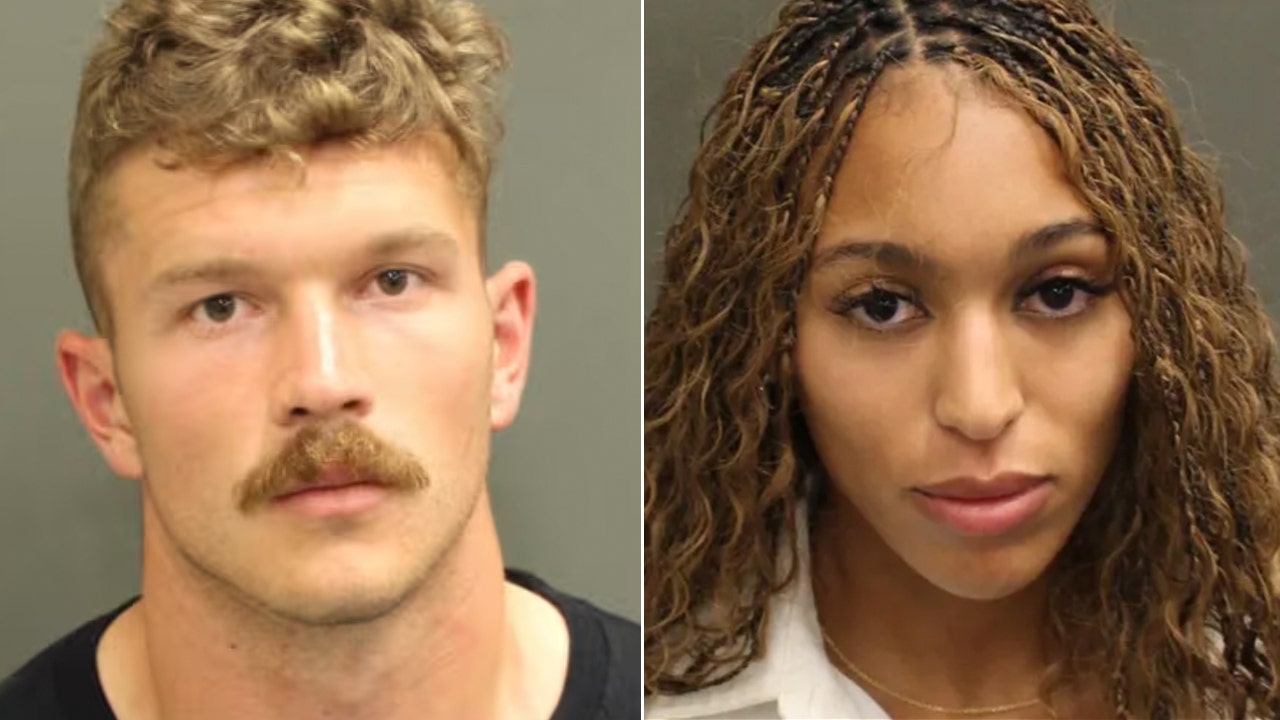
A Major League Soccer goalkeeper and his wife were arrested early Sunday morning after a fight outside a nightclub in Florida, police said.
Orlando City’s Mason Stajduhar, 26, and his wife Tatiana, 25, were charged with disorderly conduct during an incident in Orlando at around 1 a.m. ET, Fox 35 Orlando reported, citing arrest records. Responding officers arrived to see Mason allegedly trying to get back inside the club.
Booking photos showing Mason Stajduhar and his wife Tatiana Stajduhar. (Orange County Jail)
The club manager told officers the couple was “being disrespectful and causing a scene at the front entrance of the nightclub” and allegedly berated female employees at the door, the station reported.
According to an affidavit, Mason said one of the bouncers at the club hit his wife and wanted to re-enter the club. He reportedly admitted to resisting security officers in an attempt to check on his wife.
USA, MEXICO PULL BID FOR 2027 WOMEN’S WORLD CUP WITH FOCUS ON 2031
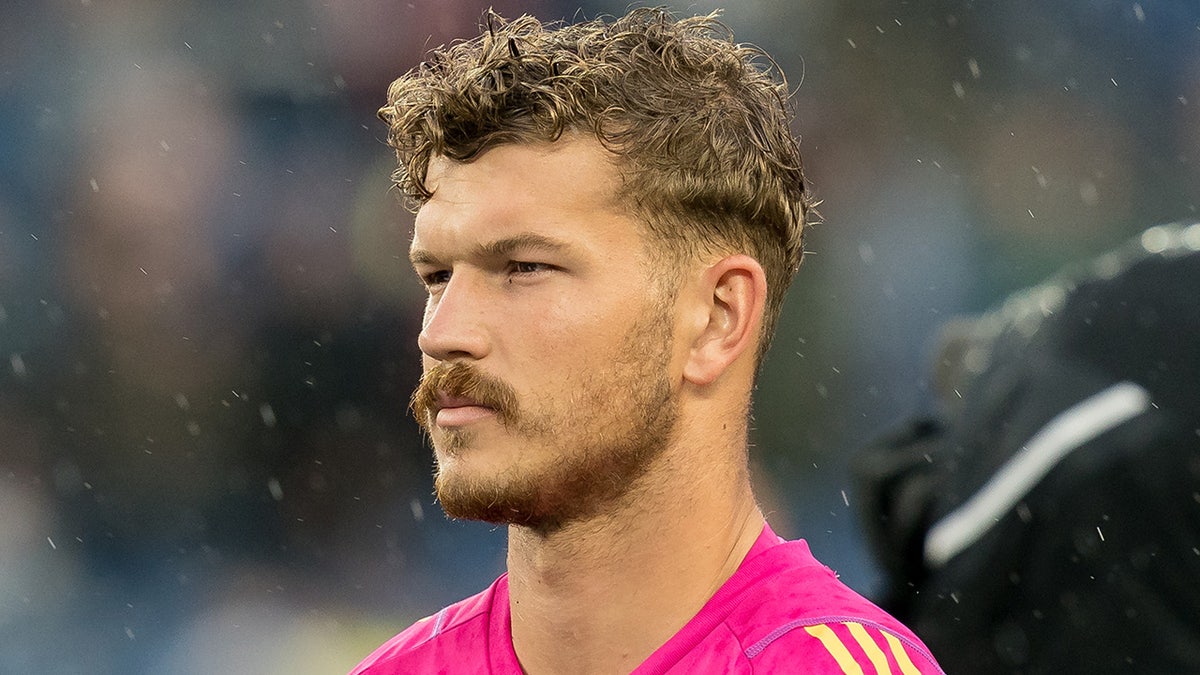
Mason Stajduhar, #31 of Orlando City SC, before a game between Orlando City SC and New England Revolution at Gillette Stadium on June 17, 2023 in Foxborough, Massachusetts. (Andrew Katsampes/ISI Photos/Getty Images)
Tatiana Stajduhar was allegedly “screaming obscenities” at officers who arrested her husband. She allegedly pushed an officer with an open hand but was not charged with battery on an officer and resisting arrest with violence. Police said “discretion was used,” according to Fox 35 Orlando.
“The Club is aware that goalkeeper Mason Stajduhar was arrested early Sunday morning. We are currently gathering more information and will have no further comment at this time,” Orlando City said in a statement.
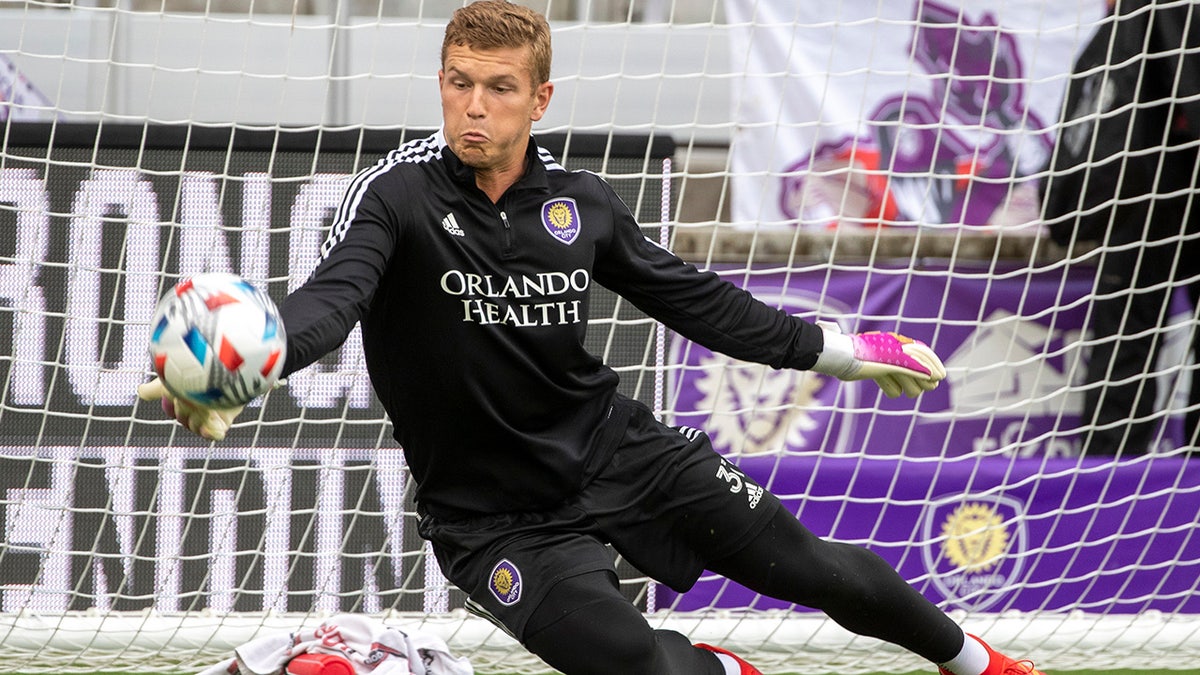
Orlando City goalkeeper Mason Stajduhar, #31, warms up before the Leagues Cup Quarterfinal match between Orlando City SC and Santos Laguna on Aug. 12, 2021, at Exploria Stadium in Orlando, Florida. (Joe Petro/Icon Sportswire via Getty Images)
Stajduhar is in his fourth season with Orlando City. He has made one start this season and 12 starts overall with the club. He previously played for Orlando City B in USL League One and the Tulsa Roughnecks in the USL Championship.
Follow Fox News Digital’s sports coverage on X and subscribe to the Fox News Sports Huddle newsletter.
Sports
Four takeaways from UCLA's first spring football practice under coach DeShaun Foster
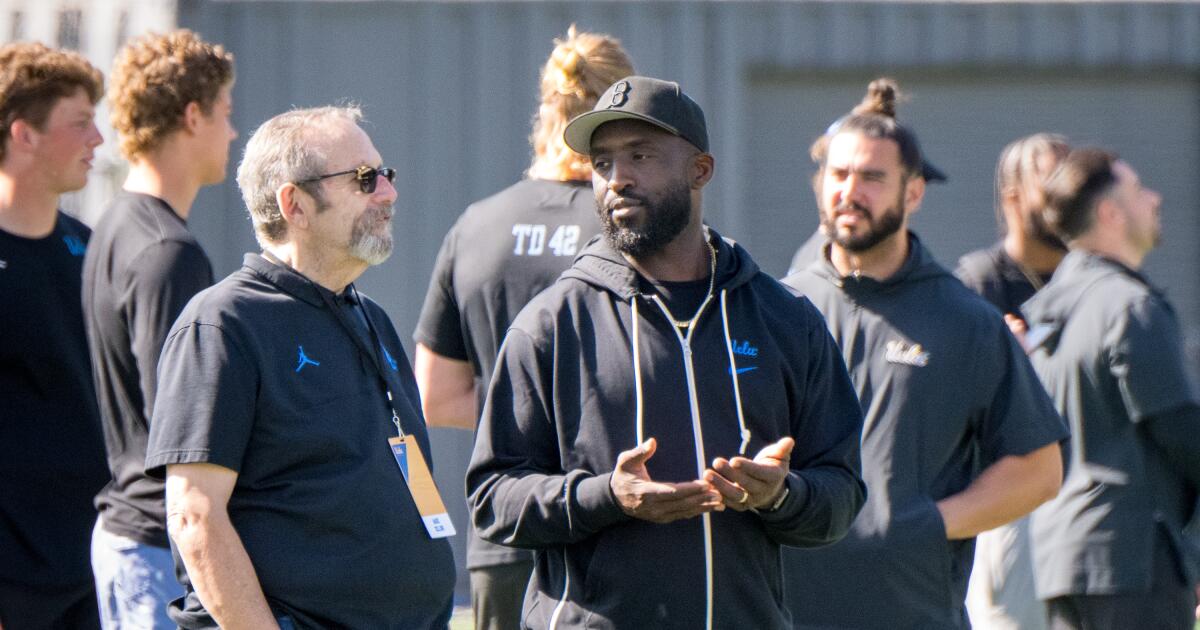
If there was a College Football Playoff for the offseason, DeShaun Foster would have his team in contention.
Name an aspect of program-building — assembling a staff, getting buy-in from players, recruiting, engaging fans, soliciting name, image and likeness dollars — and UCLA’s new coach has nailed it in his first months on the job.
Foster has rejuvenated the fan base, not to mention a roster that has mostly remained intact because of its belief in its coach. He’s courted donors in a way that his predecessor was unwilling to do. He’s aggressively pursued high school recruits in addition to transfers, who had formed the core of the team in recent years. He’s built a buzz around a faded brand that hasn’t gone to a major bowl game in a quarter of a century.
Can these early wins vault the Bruins to success in their inaugural Big Ten season? Impossible to say. But it’s apparent that Foster will take on challenges as fearlessly as he did defenders when he starred at running back for his alma mater’s last Rose Bowl team.
Here are four takeaways from UCLA’s first spring practice under Foster:
A dynamic offense
UCLA’s offense put up plenty of points under Chip Kelly but often had a stubbornly predictable feel, particularly on fourth downs and short-yardage situations.
What the Bruins have shown in their first weeks under new offensive coordinator Eric Bieniemy is a more versatile approach that appears to emphasize protecting the quarterback. Among the plays the team ran were a variety of screen passes and rollouts that minimized the possibility of sacks while getting the ball out of the quarterback’s hands quickly.
Barring the arrival of a veteran quarterback, Ethan Garbers has clearly established himself as the one who will take the season’s first snap. He’s found a reliable rhythm throwing to Titus Mokiao-Atimalala, Logan Loya and Rico Flores Jr.
Keegan Jones is pushing T.J. Harden for the designation as the top running back, showing more explosiveness and pass-catching ability out of the backfield. The offensive line is in flux with at least three transfers yet to arrive on campus. The hope is they can solidify what was the team’s biggest weakness a year ago.
An electric vibe
There was sometimes yelling, leaping and cheering before the first practice drill.
It was all part of one-on-one competitions Foster instituted to get his players in the mood for football. The entire team would gather around the combatants to take sides, with the winner swarmed by joyous teammates.
Another tradition was unveiled with the debut of Friday Night Lights, an evening football practice with a festive feel that drew a few thousand fans, donors and recruits.
Foster also brought the spring showcase back to the Rose Bowl for the first time in nearly a decade, fans given the opportunity to greet players with the revival of the Bruin Walk from a parking lot into the stadium.
That’s not to say Foster was more focused on fun than football.
“My No. 1 thing each practice is how hard are we competing?” Foster said. “Are these guys really leaving it out there on the field? Are they trying to get better daily?”
Real go-getters
Some days there were more high school recruits than fans watching practice, a sign of renewed interest in the team among local prospects.
Earlier this spring, Foster estimated that the team had hosted more than 2,000 recruits. A few gave verbal commitments immediately after the end of the Friday Night Lights event.
“It was so good that people wanted to jump in the boat,” Foster said, “so I was pretty impressed.”
Foster and his staff have appeared to trumpet commitments with simultaneous video tweets featuring the school and Southern California hot spots.
Those videos have gotten significant airtime considering the Bruins’ ability to land five transfers since the portal opened last month, providing an infusion of veterans at positions of need. Tackle Reuben Unije (formerly of Houston and Louisville) and interior offensive lineman Alani Makihele (Nevada Las Vegas) could start immediately and tight end Bryce Pierre (Arizona State) could get plenty of playing time alongside returners Moliki Matavao and Jack Pederson. Punter Brody Richter (Northern Arizona) and long snapper Travis Drosos (South Alabama) are the latest transfers to commit.
A few holes left
The team is so thin at edge rusher that it’s regularly used linebacker Oluwafemi Oladejo in that spot, capitalizing on his combination of speed and power. More help will arrive once Miami transfer Collins Acheampong recovers from an injury and Johns Hopkins transfer Luke Schuermann gets on campus for fall training camp.
The Bruins also lost two offensive linemen — Bruno Fina and Benjamin Roy Jr. — to the transfer portal, nearly offsetting any gains in depth. They could certainly use a few more proven players at the position.
Earlier this spring, the Bruins had as many tight end coaches (one) as they had available scholarship players at the position after injuries to Pederson and Hudson Habermehl. They could use at least one more tight end besides Pierre given Bieniemy’s apparent fondness for plays that incorporate two tight ends.
Other positions of need include defensive back, running back and quarterback.
Sports
From Broadway to the Kentucky Derby: The woman behind the Derby's most coveted hats

It’s a crisp, sunny morning in late March, 40 days until the Kentucky Derby.
I’m in a small midtown Manhattan studio, in a showroom filled to the brim with towers of handmade hats. One of the projects on this week’s docket: A hat requiring 150 handmade silk roses, one for each year of the Kentucky Derby’s unbroken history. Each rose is individually cut and sewn here on site.
“We’ve made 44 roses so far,” says Carol Sulla, director of operations and sales for Christine A. Moore Millinery.
Which leaves “only” 106 roses to be sewn before the first Saturday in May.
Christine Moore is the woman behind many of the Derby’s most coveted hats. She built her early career working on Broadway shows before opening her own shop and focusing on millinery, the craft of hat-making. Moore was the first featured milliner for the Kentucky Derby and received the commission of “Kentucky Colonel” from Governor Andy Beshear in 2022.
The celebrities who have worn her hats top the A-List — Katy Perry and Jennifer Lopez are among her numerous clients — and Moore’s hats have made appearances in shows like Gossip Girl, Nashville and The Carrie Diaries. During Derby hat season, which roughly starts in January, they’ll ship out upwards of 1,000 hats, all designed and crafted here in this small studio.
And now I’m here to find my Derby hat.
Patty Ethington in 2009, wearing a Christine A. Moore hat that would one day sit in the Kentucky Derby Museum. (AP Photo / Patti Longmire)
It’s possible that Moore’s most famous hat was a Kentucky Derby commission in 2009. Worn by Patty Ethington of Shelbyville, Ky., the red hat was designed to look like a massive flower and could fit three people under its brim. A photo from the day went viral, and the rest is — almost literally — history: The hat ended up in the Kentucky Derby Museum for 10 years. Ethington is now known for her larger-than-life Derby hats. “The bigger, the better,” she says.
This year, for the 150th anniversary of the Derby, Ethington broke out the big red hat and is bringing it back.
“The very first one that Christine made for me is the one I’m redoing this year,” Ethington tells me. She and Moore worked together to adapt the hat to a new outfit without making any irreversible changes. “We’re putting black in the hat, so I can just add a little bit of a different flair to it, but I can still bring it back to the original red hat that was in the museum.”
For Derby attendees, the dress-to-the-nines fashion game is as much a draw as the race itself — and honoring history is a big part of their calculations, especially on its 150th anniversary.
“I probably started planning my outfit for the Derby three months ago, and I knew I wanted to pay tribute to the Derby,” says Priscilla Turner, another client of Moore’s. “I really wanted to match the caliber that I know other people are coming with.”

A Singer sewing machine sits in Christine Moore’s millinery studio in New York.
For Moore, prepping her clients for “The Most Exciting Two Minutes in Sports” involves hundreds of hours of meticulous planning and exacting work.
Millinery, in fact, is as much a game of numbers as horse racing.
The daughter of an engineer, Moore had an early affinity for math but fell in love with the theater in high school, pursuing a degree in costume design and art at Kutztown State University.
It all came into focus when she was partnered with a milliner at Philadelphia’s Walnut Street Theater. Perhaps thanks to her father’s engineering genes, Moore realized she had the brain for precision measurements, while her flourish for design and sculpting sparked her creativity. In 1990, she moved to New York City to work with renowned milliner Rodney Gordon, whose work has appeared in countless Broadway shows.
Four years later, Moore took the plunge, opening her shop on 34th Street. She had no idea how her business would grow, nor did she fancy herself a Derby hat maker. She knew a little about horse racing but didn’t quite grasp the fashion connection to the race until 2000, when she was invited to speak at a boutique in Louisville. She packed three hats for the trip, completely unaware of the pull of Derby fashion, and when attendees snapped them up, she knew she’d found her niche.
Moore’s schedule is jammed now with trunk shows and appearances at other races, including the Arkansas Derby and Florida Derby. She is on call in Louisville for Derby week — creating hats, meeting customers and making last-minute emergency adjustments.
Despite her well-earned prestige, Moore has remained intentionally mom-and-pop in her business model. Her husband, Blake Seidel, is her business partner, and Sulla has been with Moore for eight years. Sulla grew up 15 minutes from the Belmont race track but knew little about horse racing and came to Moore via the theater. She worked in props and was looking for something steadier than the contract-to-contract work Broadway offers.
Many of Moore’s designers come from similar theater backgrounds, with Moore offering them part-time work and additional income to carry them through their otherwise peripatetic career arc.

There are hundreds of hats, samples and fabrics inside the store.
Moore’s studio is on the 10th floor of a building on Manhattan’s bustling 34th Street, wedged between a Foot Locker and an H&M and facing the window displays of the iconic Macy’s flagship store. To get there, I proceed up a tight elevator and into a narrow hallway I can only describe as “greige,” through a fluorescent-lit stairwell and finally to an unassuming brown door with the sign: “CHRISTINE A. MOORE Millinery.”
When the door opens, I’ve stepped through the looking glass. I’m greeted by color from floor to ceiling — bows, brims, flowers, ribbons, feathers, silks, striped hat boxes and vintage fashion posters.
A few steps through this showroom, I walk into the back workroom where the real magic happens: The room isn’t large and is quiet but quite busy, with the hum of sewing machines and steamers. Eight people are ironing, steaming, shaping, cutting, pinning and hand-sewing hats and trims. Brightly colored spools of thread adorn the walls and work surfaces. A board pinned with dozens of ribbons in rainbow colors hangs above an AC unit. There’s Tupperware filled with tiny glittery balls, another with what looks like glass marbles. I can’t help but think that a Taylor Swift fan could find everything they need for an Eras Tour concert here.
Between the hats and trim hanging on the walls are vintage fashion posters and laminated instruction sheets:
Does it have a lining?
Does it need a comb?
Does it get feathers?
Does it get beads/discoball/wire/embellishment?
Check for rogue needles and pins?
Still not sure? Always check the spec, or ask 🙂

Thread and fabric of every color inside Christine Moore’s store located off 34th Avenue in New York.
Moore is in the back of the room, shaping a pink hat, pulling it down around a head-shaped block and applying steam to stretch and mold it. She’s pulling with a vigor that alarms me, that only the most experienced hands could perform with confidence, almost wrestling the fabric into submission. (When I first arrived, I was afraid to even touch the hats on display, worried that one stray squeeze might undo hours of labor. Sulla assures me: “Just go for it. They’re sturdy.”)
“It’s not like sewing clothing,” Moore says. “We never know what our products are going to be. The hat materials come in, and they’re just a lump.”
This is the first step: Steam the fabric and craft the hat around these blocks. Nearby is a binder filled with instructions on how to create the non-custom lines that go into stores and online. The step-by-step tutorial seems intended to leave no room for error so that the original designs stay true to the designer.
“It’s truly art,” Moore says. “There are a lot of milliners you look at and they’re manufacturers, creating these pieces but without a real solid line to it.” She contends that there are “only a few” hat designers in the United States and Europe who have a distinctive look “like Oscar de la Renta would have.”
Above all, Moore is allergic to pastiche.
“Sometimes people give us research from another designer, which I hate,” Moore says. “I prefer a blank slate. Every designer hates it when they’re given somebody else’s research. I glance at it but I’m never looking at it again. I don’t want anybody else’s work stuck in my head. As a creative mind, it gets stuck, and you keep going back to it.”
Her calling card, and what has drawn so many Kentucky Derby attendees to her door, is her custom, sometimes painstaking, handmade design.
“Besides saying ‘yes we can do it,’ because all of these theater people are trained to do whatever they need to do, we started making our own trim,” Moore says. “I don’t buy it at the store. I make the flowers by hand.”
Moore is famous for the fabric flowers she creates, whether it’s 150 roses to mark the 150th Derby anniversary or a single delicate pansy made to mirror a pair of earrings. Within a few weeks, she will have a customer’s vision completed and shipped.
“She ships them in the most beautiful boxes,” Turner tells me. “Black and white boxing with her label, meticulously packaged.”

Christine A. Moore (l) helps our writer Hannah Vanbiber (r) find a Derby hat.
Back to the March morning in the studio. I’m choosing my hat.
Once selected, the hat will travel with Moore’s entourage to Louisville, where I’ll pick it up as soon as I arrive, several days later than they do. This is a work project, so in some ways, I’m approaching my choice with a dogged attempt at practicality first. I tell Moore that I need a hat I can “run around in, do interviews, not worry about it knocking people in the face.”
She tells me not to worry about that yet; let’s start with what I like. “Walk around and pull out anything that catches your eye.” I’m reminded of what it was like picking out a wedding dress, which for me was fraught with indecision and anxiety. Walking through a showroom, trying to feel your way to something that feels like “you,” requires a mix of forethought and some kind of in-the-moment alchemy.
But Moore knows what she’s doing. By the time I’m done with my loop of the showroom, I have at least seven hats. Moore helps me try them on, sliding a loop over my hair and fitting the top on like a headband, all the while asking about my dress and shoes and drawing out my vision for the outfit. She talks me through colors and shapes.
We narrow it down to a perky pink “Ashlina” fascinator created from hand-sculpted patterned paper toyo straw, trimmed with a hand-cut and sewn silk petal flower and beaded centers. The magical moment for me was when Moore stepped over and tugged it gently down to my brow line — lower than I ever would have thought a hat should go! — and suddenly, everything popped.
This was the one.
For Moore, that magical moment is all in a day’s work. “Christine is very good at looking at somebody, and within 10 minutes she has their personality, and she knows what won’t just look beautiful on you but will suit you,” Sulla says.
In Ethington’s words, “I know Christine can make the hat special. She’ll say, ‘You gotta trust me.’ And I do.”
The goal, Moore tells me, is always to create something unique.
“You’re part of the artwork; you’re finishing the artwork,” Moore says. “The hat becomes part of you.”
Dana O’Neil contributed to this story.
(Photos by Nando Di Fino and Hannah Vanbiber unless otherwise noted)
-

 Education1 week ago
Education1 week agoVideo: Dozens of Yale Students Arrested as Campus Protests Spread
-

 News1 week ago
News1 week agoLarry Webb’s deathbed confession solves 2000 cold case murder of Susan and Natasha Carter, 10, whose remains were found hours after he died
-

 World7 days ago
World7 days agoHaiti Prime Minister Ariel Henry resigns, transitional council takes power
-

 News7 days ago
News7 days agoFirst cargo ship passes through new channel since Baltimore bridge collapse
-

 World1 week ago
World1 week agoUS secretly sent long-range ATACMS weapons to Ukraine
-

 World1 week ago
World1 week agoTurkey’s Erdogan meets Iraq PM for talks on water, security and trade
-

 World1 week ago
World1 week agoSpanish PM Pedro Sanchez suspends public duties to 'reflect'
-

 News1 week ago
News1 week agoAmerican Airlines passenger alleges discrimination over use of first-class restroom
/cdn.vox-cdn.com/uploads/chorus_asset/file/25420414/https___cdn.sanity.io_images_xq1bjtf4_production_87ece728b9322264b9f1341c3ea17e8081bfde78_5925x3949.jpg)
